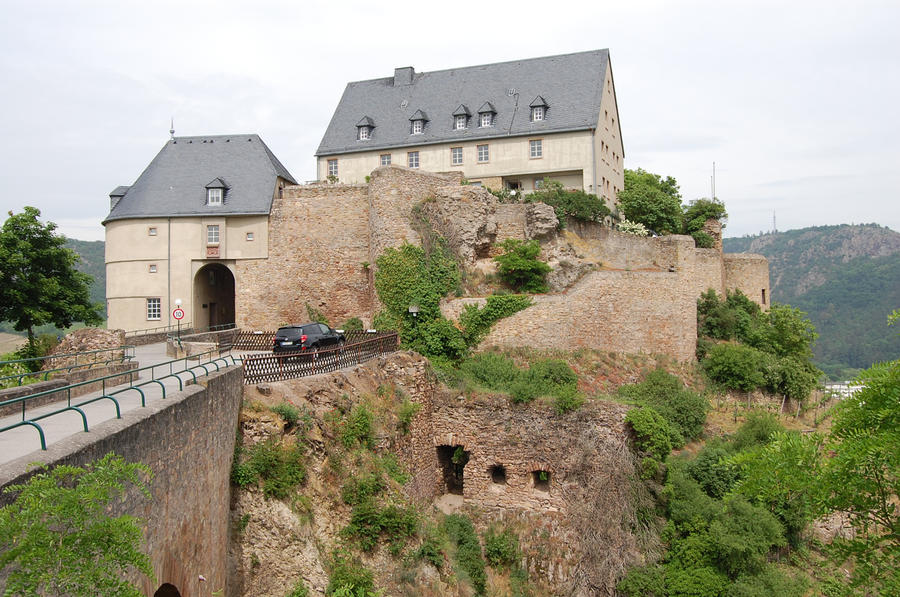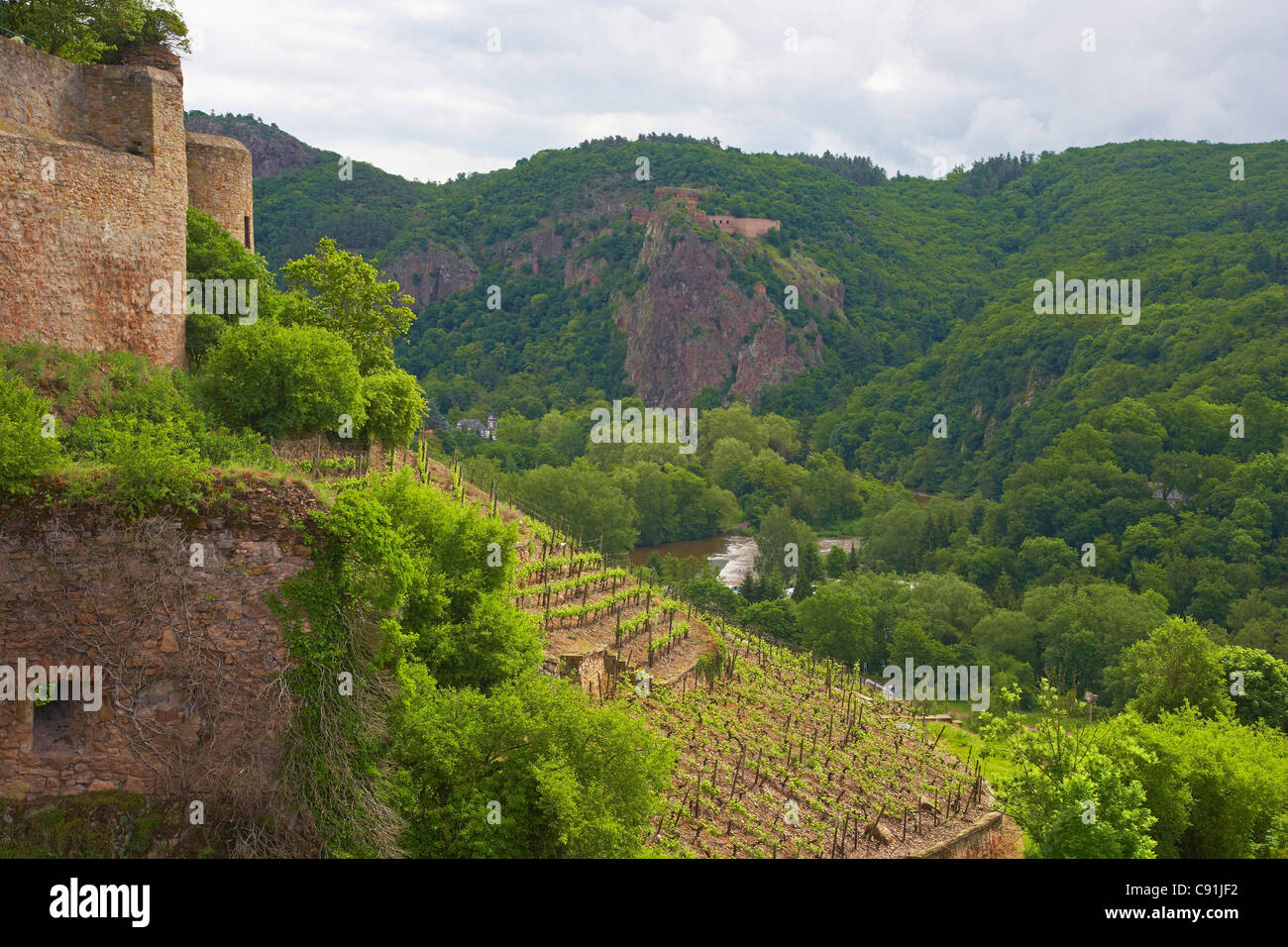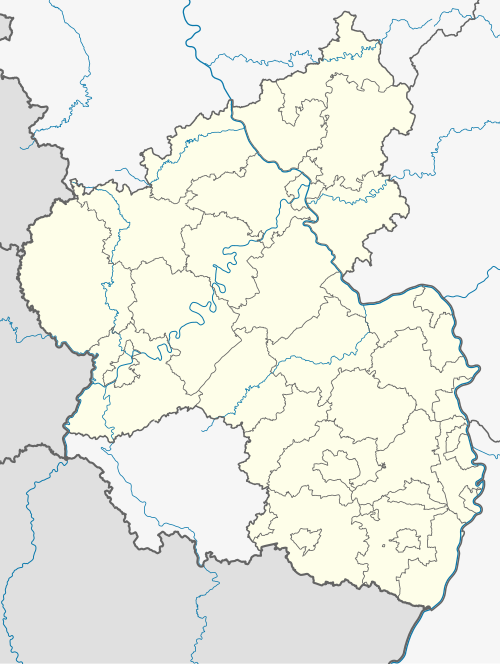Rheingrafenstein Castle
The Rheingrafenstein Castle is a ruined castle on a cliff 136 m high porphyry rock formation at 245 m above sea level. NN, the Rheingrafenstein, a thousand years ago known as Huhinstein, directly on the Nahe opposite Bad Münster am Stein- Ebernburg district of Bad Kreuznach.
History
Presumably, the castle in the 11th to 12th century by the Emichones ( Nahegaugrafen ) was built. It is certainly the ancestral castle of the Knights of stone, later wild and Rhinegraves, and remained until the French Revolution in their possession. The Lords of stone occur in the 12th century, without there a clear distinction between nobles of the same name on the Nahe. The Rheingrafenstein castle is undoubtedly mentioned for the first time in the 13th century. Already in the second half of the 12th century acquired the Men of Stone by marriage the title and possession of the county in the Rheingau. 1196 Wolfram calls of stone for the first time " Rheingraf ", thus the name was passed on to the castle.
During the Thirty Years ' War the castle was conquered and destroyed by the Spaniards in the Palatinate War of Succession in 1688 by troops of the French General Mélac. The residues were used in 1721 to build a Saline. The residence of the last resident princely line of Grumbach was moved after after Gaugrehweiler.
The information board at the castle ruins says:
History of the Rheingrafenstein
In the 11th century the castle was built on the rock at that time called " Huhinstein ". Her owners called themselves "masters of stone ". Through the marriage of Siegfried I. Stein with Lukardis, daughter of Rhinegraves Embrich from Rheinberg inherited her son the right bank of the Rhine tungsten county. After the battle of Sprendlingen in 1279 Siegfried II lost its right bank possessions to the Archbishop of Mainz and moved his residence to here and named the rock " Rheingrafenstein ". In the 14th and 15th centuries the Rhinegraves inherited by marriage the wild county and half the county Salm. The " Rheingrafensteinische " - In 1610, a count's own Rhine line was formed. During the Thirty Years' War the Rheingrafenstein was captured by the Spaniards and the Swedes. In the Palatinate War of Succession 1689, the castle was destroyed during the French King Louis XIV of General Mélac. In 1721 the ruins were cleared for construction of the salt works in Münster. In 1835, the princely descendants of the 1632 "Wild and Rhinegraves " the Rheingrafenstein and Huttental of the municipality of Münster bought back.
Plant
Parts of the Bering, a vaulted cellar, a few stairs to the former residential tower and the foundations of the former stair tower are still standing. Another staircase leads down a rock on a viewing platform.
On the south side of the Rock the bailey Affenstein is ( of "After Stone ").










